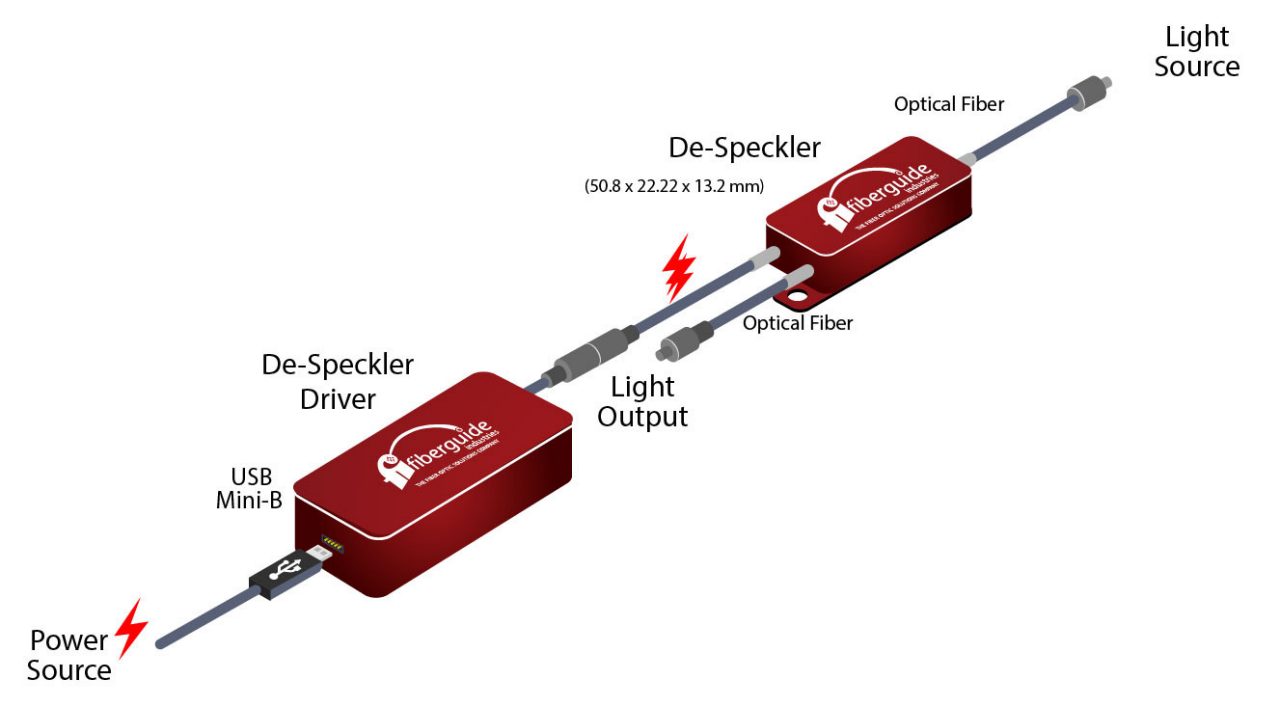Features and Benefits
Averages modal noise:
• Maximizes optical performance and reliability by reducing speckle
• Helps prevent optical loss
50 to 60 dB at 10.0cm away:
• Offers quiet performance
• Same decibel level as a running refrigerator or normal conversation
Integrated design:
• Is highly customizable
• Motheye is available
• All-in-one system available from one vendor
Simple to use:
• Delivers plug-and-play implementation
• No maintenance needed
Small form factor with a 76.00mm (3") length:
• Works well in space-constrained applications.
Overview
Life science OEMs, along with manufacturers of laser projectors and photolithography and other equipment that rely on multimode fiber optics, risk less-than-optimal performance due to mutual interference, or "speckle," in the transmission of lightwaves. The Fiberguide De-Speckler System averages the modal noise in a single optical fiber to reduce granularity in laser output intensity.
Most OEMs require a speckle-reducing product that can fit within their application, though most speckle-reducing products require an unrealistic amount of space. (See below.) Fiberguide’s De-Speckler System is about 76.00mm (3 inches) in size and can provide custom fiber lengths to fit any application.
A simple all-in-one design is ideal for most applications. The ability to reduce the amount of moving parts/equipment allows for a greater range of applications to achieve speckle reduction. The all-in-one De-Speckler System requires no additional equipment and works by plugging it in.
Specifications
Electrical:
Power Supply: +5V
Power Consumption: <1W
Fiber:
Wavelength: 400 to 1550nm
Fiber Core Size: 100 to 400µm
De-speckling Rate: Up to 10,000 Hz
Jacket Types:
Acrylate
Nylon
Polyimide
Tefzel
Fiber Types:
Plastic clad fiber
Round core fiber
Square core fiber
Connector Types:
905 SMA
906 SMA
FC/PC
FC/UPC
FC/APC
ST/PC
ST/UPC
ST/APC
Cleaved ends
Polished ends
Round 2.5mm ferrule
Custom connectors
Frequently Asked Questions
What is speckle?
Speckle is a random granular pattern in an image. It’s caused by mutual interference of modes traveling down the fiber.
What are the different types of interference?
- Dark spots are out of phase and cause destructive interference
- Light spots are in phase and cause constructive interference
How does Fiberguide’s De-Speckler System work?
Fiberguide De-Speckler System technology uses mechanical agitation to average modes in a fiber. And it’s the mode averaging that reduces speckle.





